Configuring Single Sign-On for Zendesk
Solution:
Once single sign-on (SSO) is configured, users can access their Zendesk accounts with just their Active Directory or Microsoft Windows credentials. They can also access Zendesk accounts with just a single click from ADSelfService Plus’ web console.
Prerequisites
- Log in to ADSelfService Plus as an administrator.
- Navigate to Configuration → Self-Service → Password Sync/Single Sign On → Add Application, and select Zendesk from the applications displayed.
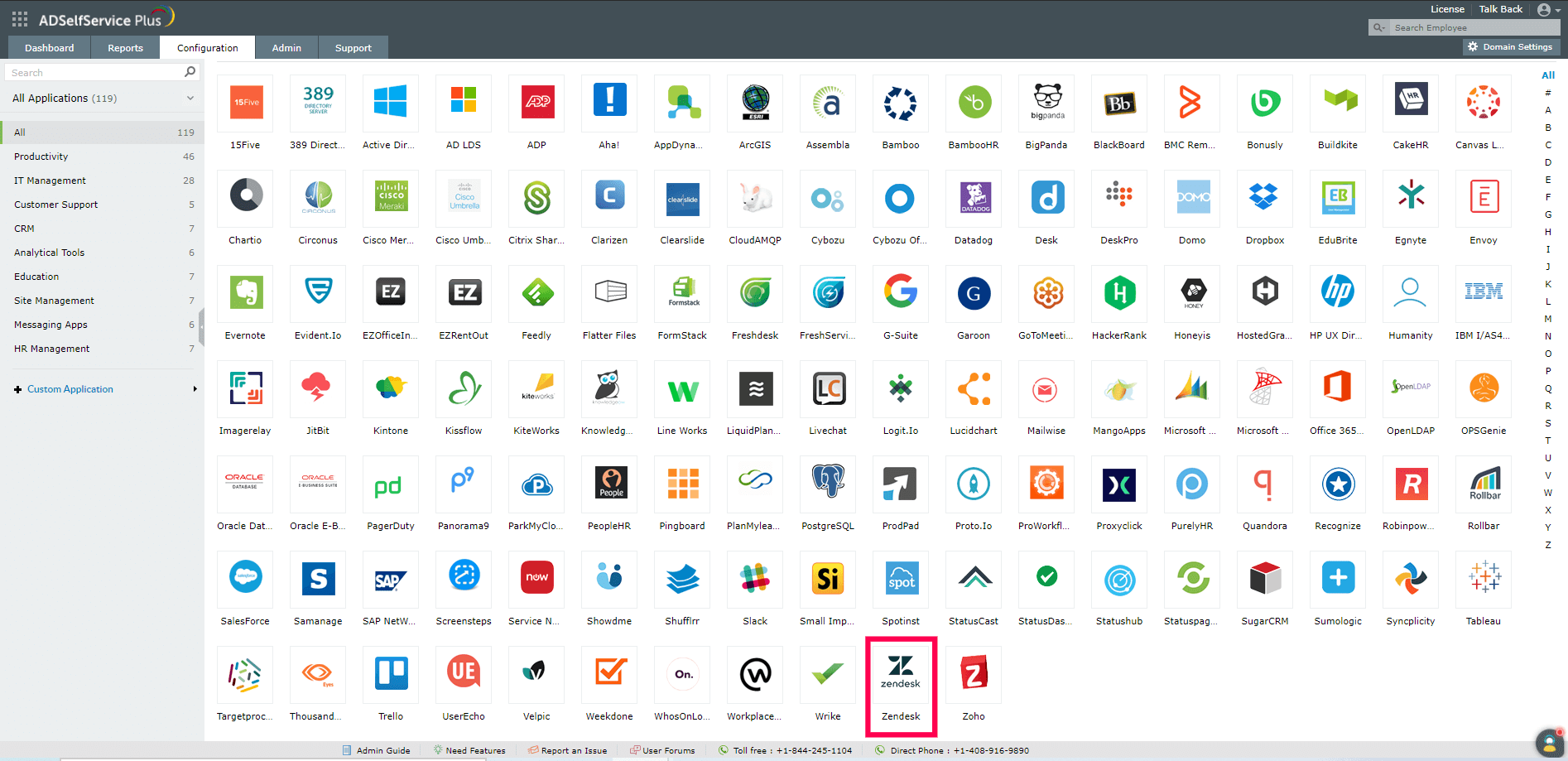
Note: You can also find the Zendesk application you need from the search bar located in the left pane, or the navigation option in the right pane.
- Click IdP details in the top-right corner of the screen.
- In the pop-up that appears, copy the Login URL, Logout URL, and Sha256 Fingerprint values.
Zendesk configuration steps:
- Log in to Zendesk with administrator credentials.
- Navigate to the Admin Center by clicking the menu icon near the profile icon.
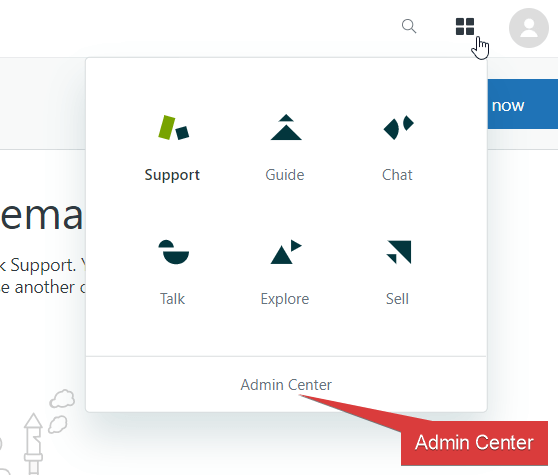
- In the Admin Center, navigate to Security → Single Sign-on.
- Click Configure in the SAML section.
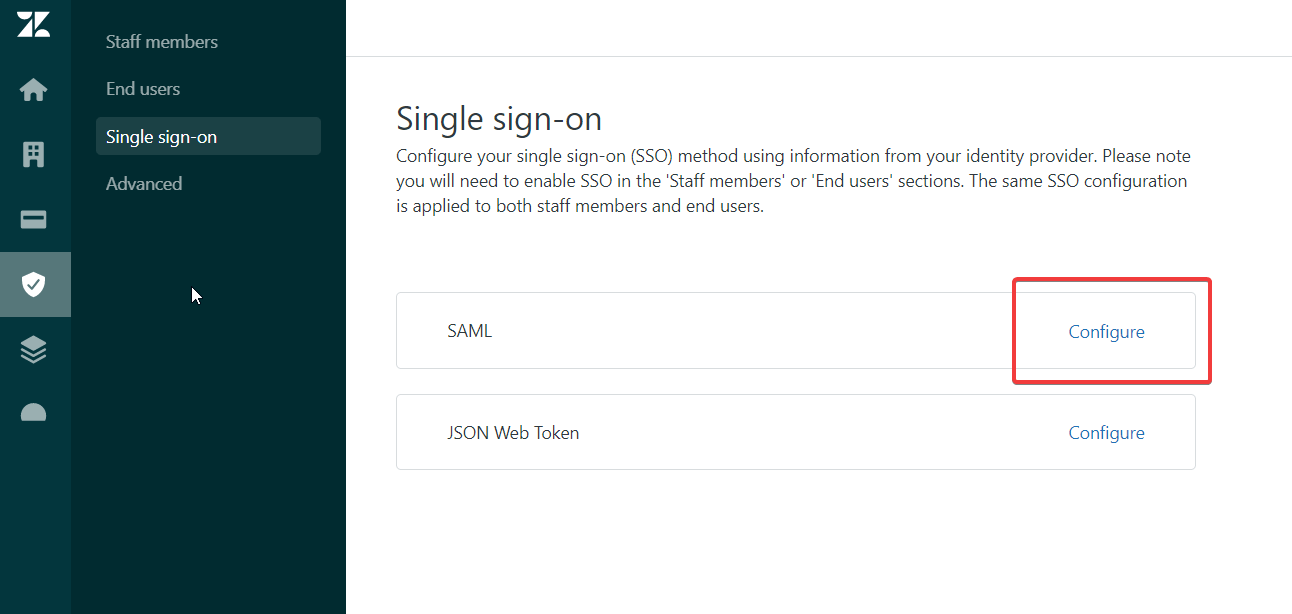
- Select the Enabled checkbox.
- In the SAML SSO URL field, enter the URL for signing in to your system and Zendesk (refer to Step 4 of Prerequisites).
- In the Certificate Fingerprint field, enter the certificate fingerprint obtained from the product(refer to Step 4 of Prerequisites).
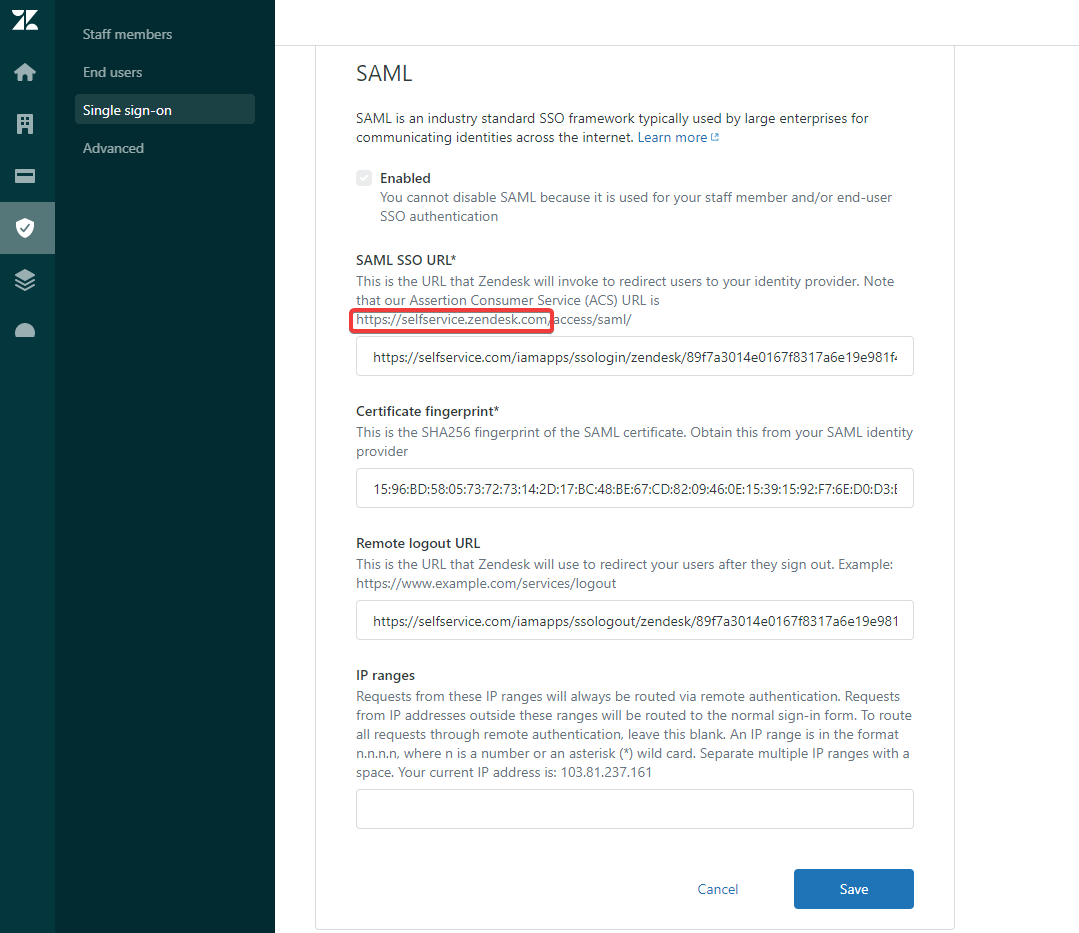
- For the Remote Logout URL, enter the URL users should be redirected to when they sign out (refer to Step 4 of Prerequisites).
- Make note of the Assertion Consumer Service (ACS) URL, as it will be input in the SAML Redirect URL field during the ADSelfService Plus configuration.

- Click Save.
- Enable SAML Single Sign-On for end users by navigating to Security → End Users.
- Select External authentication.
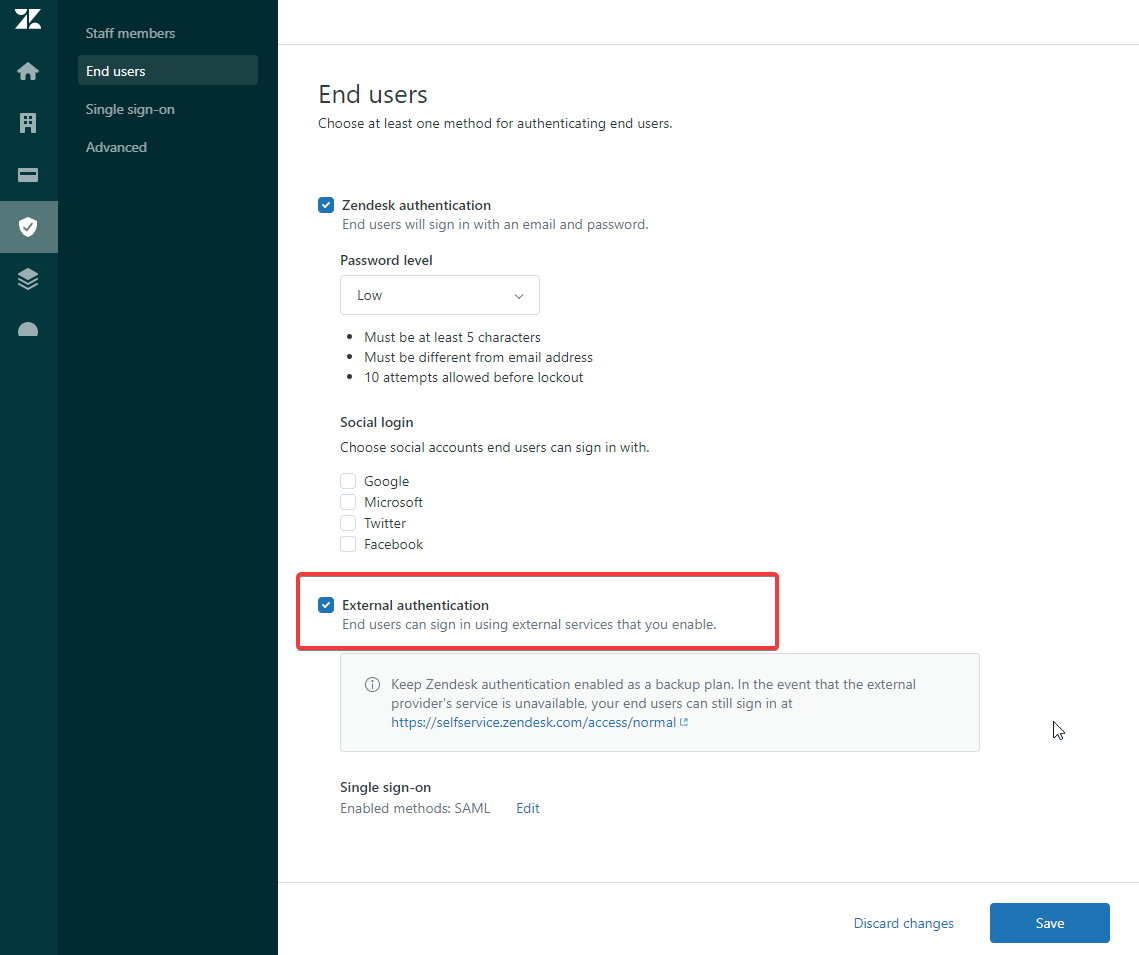
- Click Save.
ADSelfService Plus configuration steps
- Now switch to ADSelfService Plus’ Zendesk configuration page.
- Enter the Application Name and Description.
- Under the Assign Policies field, select the policies for which SSO needs to be enabled.
Note: ADSelfService Plus allows you to create OU- and group-based policies for your AD domains. To create a policy, go to Configuration → Self-Service → Policy Configuration → Add New Policy.
- Select Enable Single Sign-On.
- Enter the Domain Name of your Zendesk account. For example, if you use johndoe@thinktodaytech.com to log in to Zendesk, then thinktodaytech.com is the domain name.
- Enter the SAML Redirect URL you saved in Step 9 of Zendesk configuration steps.
- Click Add Application.
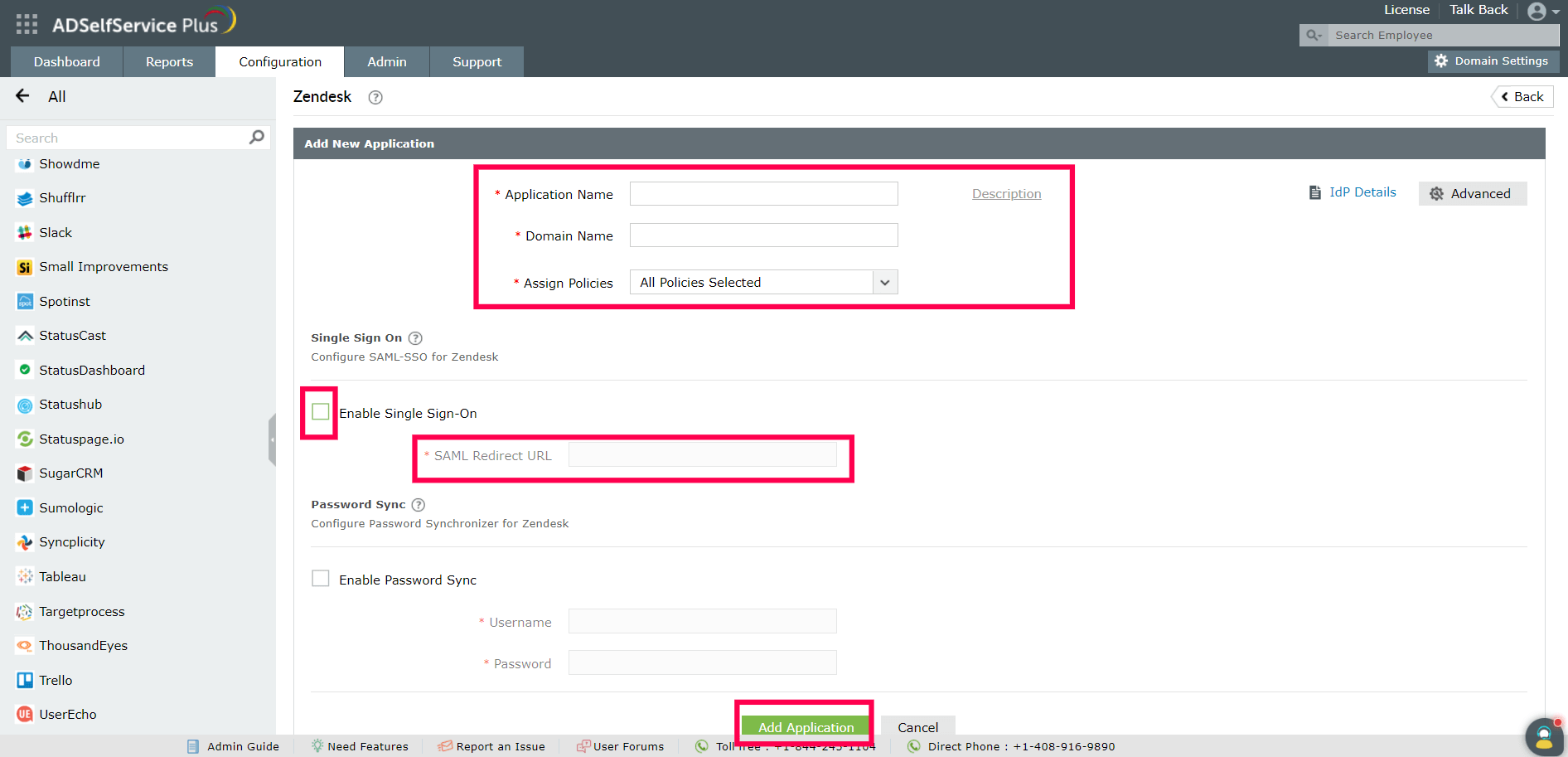
Your users can now sign in to Zendesk through ADSelfService Plus.
Highlights
Free Active Directory users from attending lengthy help desk calls by allowing them to self-service their password resets/ account unlock tasks. Hassle-free password change for Active Directory users with ADSelfService Plus ‘Change Password’ console.
Get seamless one-click access to 100+ cloud applications. With enterprise single sign-on, users can access all their cloud applications with their Active Directory credentials. Thanks to ADSelfService Plus!
Intimate Active Directory users of their impending password/account expiry by mailing them these password/account expiry notifications.
Synchronize Windows Active Directory user password/account changes across multiple systems, automatically, including Office 365, G Suite, IBM iSeries and more.
Ensure strong user passwords that resist various hacking threats with ADSelfService Plus by enforcing Active Directory users to adhere to compliant passwords via displaying password complexity requirements.
Portal that lets Active Directory users update their latest information and a quick search facility to scout for information about peers by using search keys, like contact number, of the personality being searched.